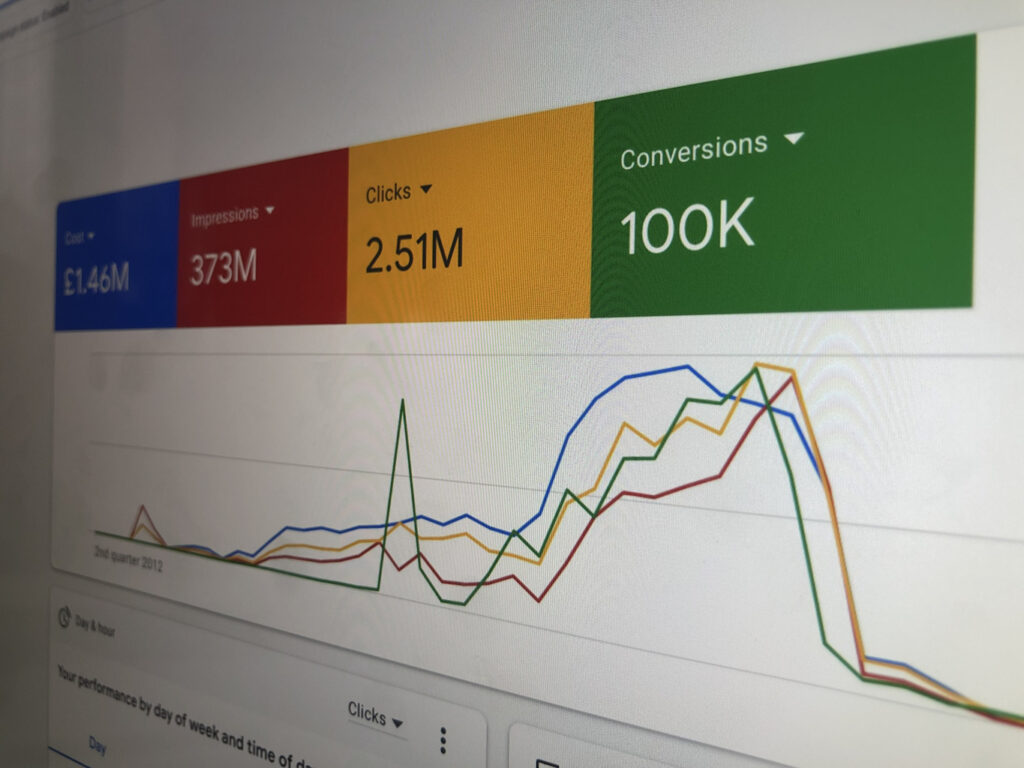Performance marketing is and should always be about driving tangible business outcomes. If you’re used to working in ecommerce, this becomes quite black and white. You invest money in media channels and get instant ROI feedback.
Things get a bit less clear with B2B. With potentially long buying journeys and complex buying processes, remaining 100% focused on a tangible business outcome can be harder than it sounds. We all know we should, but sometimes reality and various restrictions and challenge have a nasty habit of getting in the way.
The first obvious step is to pick an objective and stick to it. In some cases this could be direct enquiries, in other cases it could be growing a database of valuable contacts that can be nurtured through to opportunity. Whatever is chosen, there has to be a direct link between investment and true value. Which in most cases for any B2B strategy, this will be high value qualified leads.
Every business will be different, but we have to find the perfect balance between what the business needs and what is realistically possible with the channels we have at our disposal.
There are always going to be many elements that go into a successful B2B campaign. In this post we delve into some of our top ways to drive a growth in high value leads from performance marketing.
Tracking (pipeline)
The most vital step in any B2B marketing campaign is to make sure you have 100% clarity on the end result, including a breakdown on what is driving the value. In order to direct your investment in performance marketing towards clear business outcomes, you need to have the ability to attribute your activity to what is AND what is not working.
In practical terms, this means ensuring your CRM can record and track campaign activity against sales & contact records. As a minimum, you need to be able to record details including source, medium and campaigns.
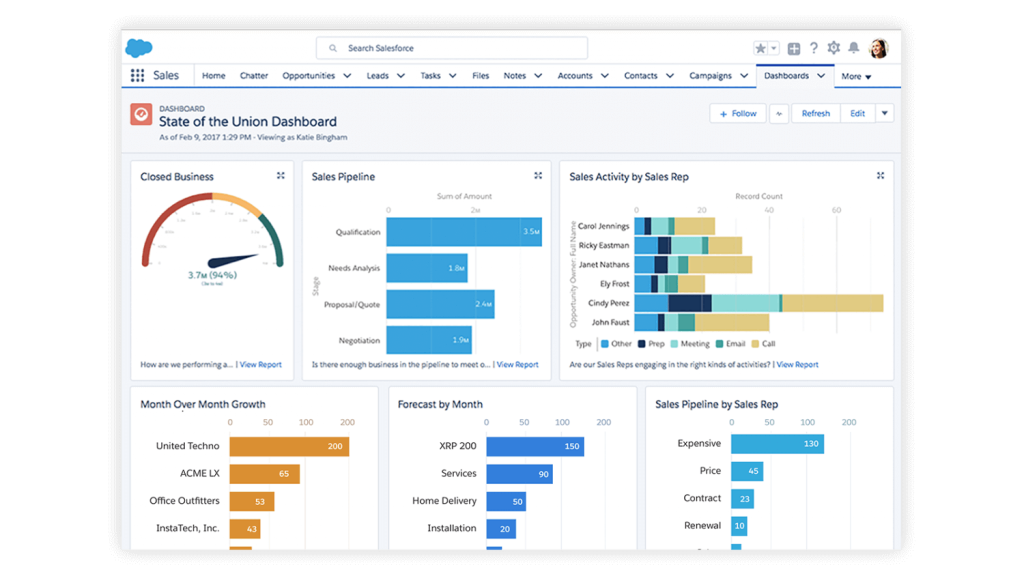
Once in place, this means that if a new customer were to come into the system via a LinkedIn Ad campaign but not convert into revenue for six months, you’ll have concrete evidence of where they’ve come from when the business eventually closes.
This is good news, because not only will you be able to demonstrate a real ROI, you will also be in a position to to spend more on what is driving pipeline, and quickly cut what is not. It takes you away from looking at surface level marketing KPIs, and much closer to measuring your marketing on sales outcomes.
Gated assets
One of the biggest differences between B2C and B2B campaigns is the content required to drive leads.
With high value services, there is usually a degree of education or some form of value exchange needed to attract new customers. With the right content, you get a chance to showcase your skill set, offer some valuable insights and position yourself as a leader in the space.
A time proven strategy on LinkedIn Ads is to offer high value, gated content such as webinars, online training sessions, white papers, research pieces, guides and so on…all in exchange for an email address.
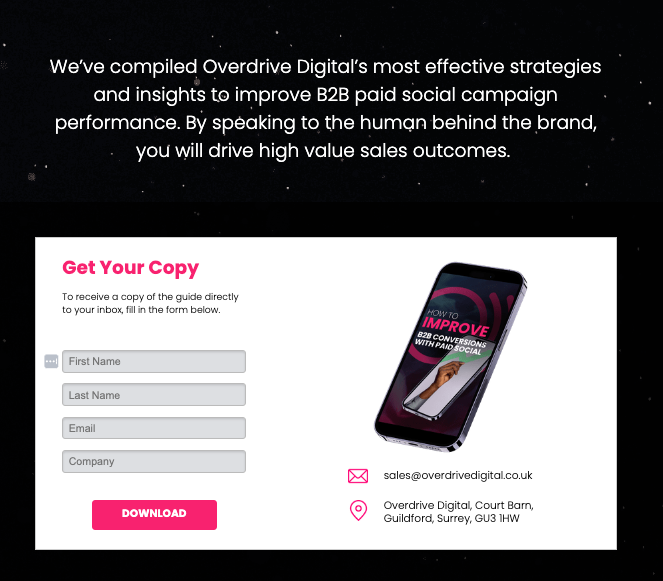
A key thing to remember about LinkedIn is that it is still a social platform. People go on there for information and insights, they don’t log on to be sold to. As such, when running ads on LinkedIn we always advise to “sell your knowledge, not your service”. Yes, it’s a longer term play, but the results are far far better.
If you get the nature of the content right and of course the targeting, this can be an amazing way of scaling up contacts that can then be nurtured via follow ups and email campaigns.
Search
When it comes to B2B marketing and search campaigns, the danger you must avoid is going too broad.
Obviously we are all aware of the fact that Google Ads is changing rapidly, but the foundations of the platform are still very much about targeting language (AKA search terms) and not targeting people.
This means that it’s extremely important when running PPC for B2B that you take steps to avoid crossing over into consumer search. As good as Google Ads machine learning is, we still see major issues with automated campaigns not understanding the difference between business and consumer search terms, thus potentially wasting a huge amount of spend.
For many companies whose target is high value leads, the winning approach is to go very tight on keyword selection and accept that there will be a ceiling on spend. That’s no issue as the volume can be picked up elsewhere (LinkedIn for example), however the main word of advice is to be very, very controlled with what you run on paid search.
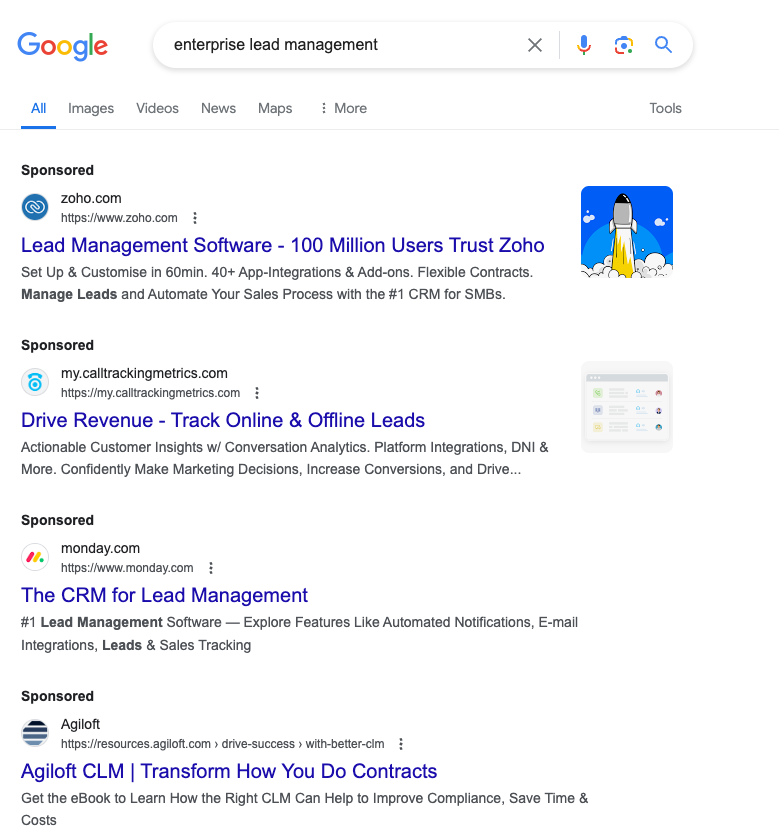
Retargeting
Retargeting within the world of B2B can unlock some extremely interesting tactics. Deciding on how to approach retargeting should really start with some consideration of the following two factors:
- Audience sizes & general volume
- Pipeline flows and buying cycles
On the first point, your audience size (i.e matched audiences via your CRM data) will determine how much you can run. If your audience sizes are on the small side, then only a simple retargeting plan will be possible until your numbers grow. If you’re in a position where you have a large amount of audience data, then you can start to explore more complex strategies.
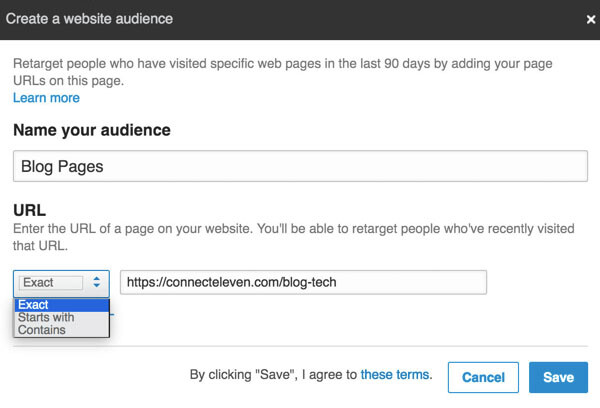
Secondly, retargeting for B2B lead generation is really not a case of hammering everyone with ads repeatedly. You have to be smarter than that, which should start with you looking at your current sales cycles and sales processes.
Let’s say for example you have evidence that suggests sales opportunities come in through an enquiry form and then take on average 1-3 months to convert to an opportunity; what content could you serve to those people to help nurture them through and potentially speed up the process?
It sounds obvious, but the content and creative you choose for the scenario above will need to be very different to any content you choose to use for retargeting cold website traffic.
Be thoughtful and retargeting can work wonders for your pipeline!
Ad copy & creative
The approach to ad copy and creative is where things get a bit more similar to running B2C campaigns.
Clearly the messaging and types of ad creative are going to be very different, however the approach is typically very similar. This is because everything should always be based on a set of hypotheses and a clear testing plan. So in theory and at a high level, we’re simply working through a set of theories and testing them against a plan.
The other similarity and one that way too many people forget, is that B2B is still ‘human to human’. Our task with ad creative is not to engage a business, it is to engage an individual human being that works within a business.
As such, we have to make sure that our ads appeal to people. Sounds obvious, but how many B2B ads have you seen that have no personality or human touch whatsoever? Probably quite a few.
Typically, the ads that we see do exceptionally well make use of creative that speaks to people, gets the point across clearly, and avoids internal / industry jargon. This could be in video form or in image form, but the key really is in simplifying your message.
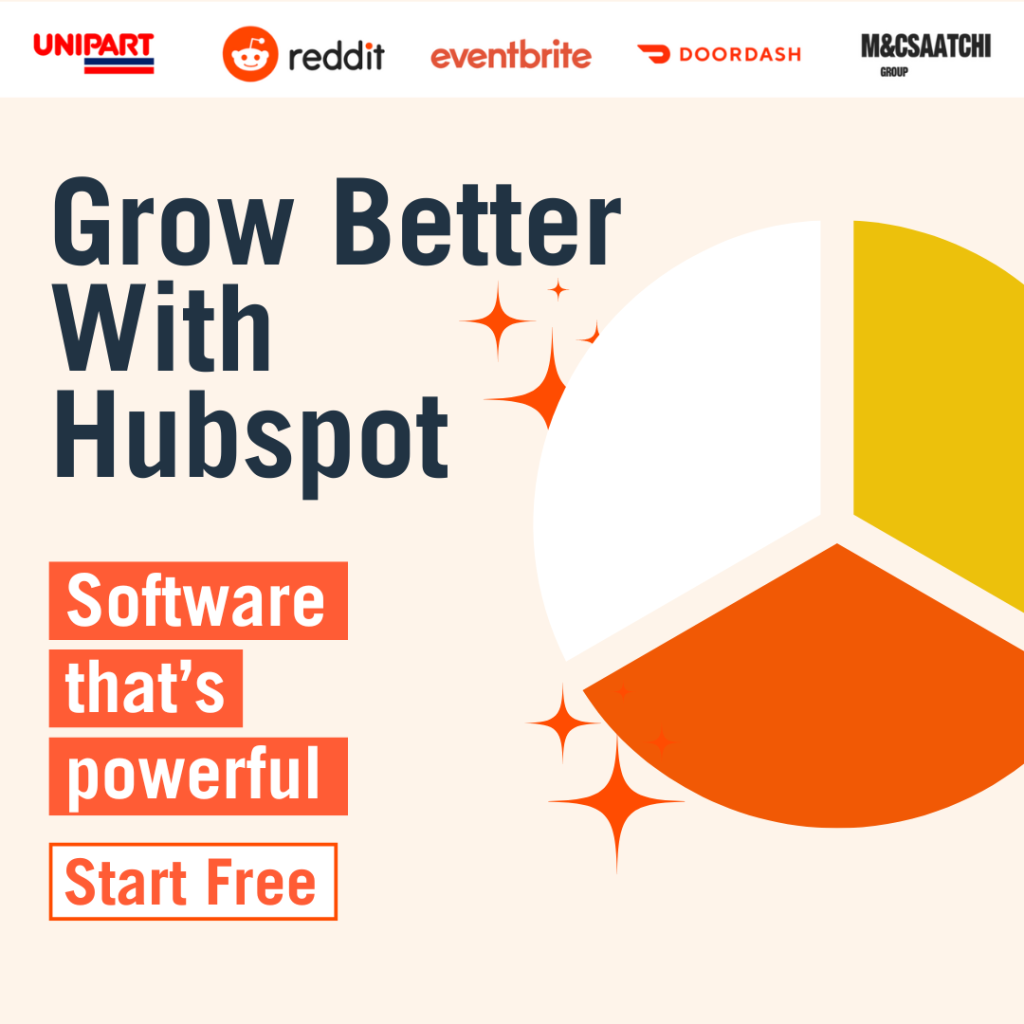
Throw a protective creative department, an exuberant coms team and an extensive sign off process into the mix, and as with a lot of the points in this post…keeping creative simple and iterating quickly can be easier said than done.
Landing Pages
It goes without saying that your landing pages are absolutely key. You could have the best performance marketing campaigns in the entire universe, but send people to a bad landing page and all your efforts fall at the last hurdle. Not good.
Thankfully, designing effective landing pages is not all that hard. Using software such as Unbounce (many others are available), new templates and variations can be spun up pretty quickly.
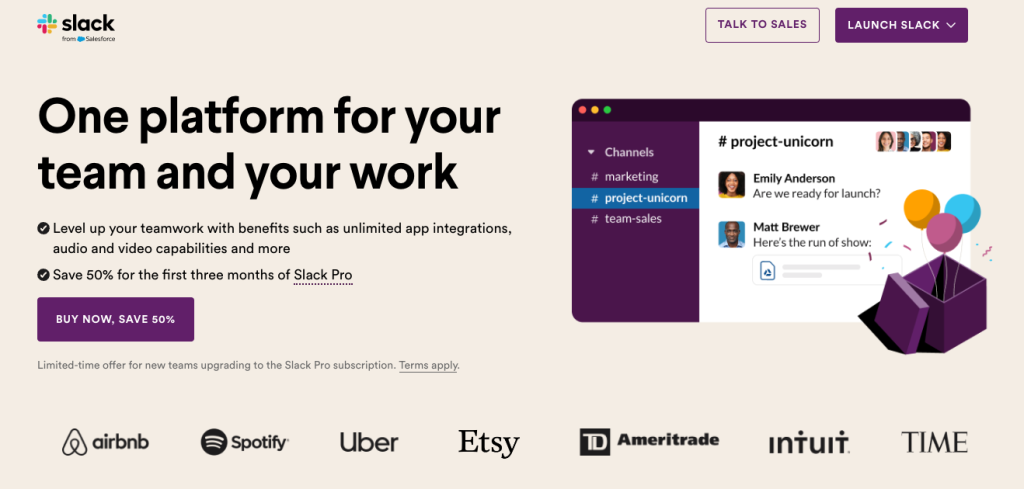
Typically we see the best landing pages including a combination of the following:
- Benefit focused headline
- Quick description of your offer
- Social proof (testimonials etc)
- Credibility factors
- Simple form
Nothing above that’s particularly groundbreaking or new to anyone, however the real secret sauce is in getting all of the above to speak clearly and directly to what your potential customers need at that exact moment in time.
Email Flows
Once you’ve converted traffic through a contact form, then the hard work really begins!
It’s obviously not ever going to be enough to simply collect user data through a form, and particularly if we’re talking about longer sales cycles with higher value deals, things are going to take time and people will need to be nurtured.
This really is where email comes into play.
One of the saddest sights in B2B marketing is a big focus and investment in media buying, followed with no thought at all on what to do with any new leads once you have them. This is the precise definition of leaving money on the table. It’s madness.
Rather than falling down at this stage, design and implement a set of simple email flows to keep in touch with your new contacts.
This will need to change and adapt based on how someone has entered the process; for example, if they have completed a form to gain access to some content, your next set of emails should ideally be continuing to offer relevant content, rather than shooting for the sale.

All good email platforms will give you the ability to run automated flows. It doesn’t have to be complicated, but you must do something to follow up with any leads you acquire.
Really hope this post was helpful. If you ever need help with your B2B campaigns, get in touch for a conversation with our team to see how we could help you grow your leads.



